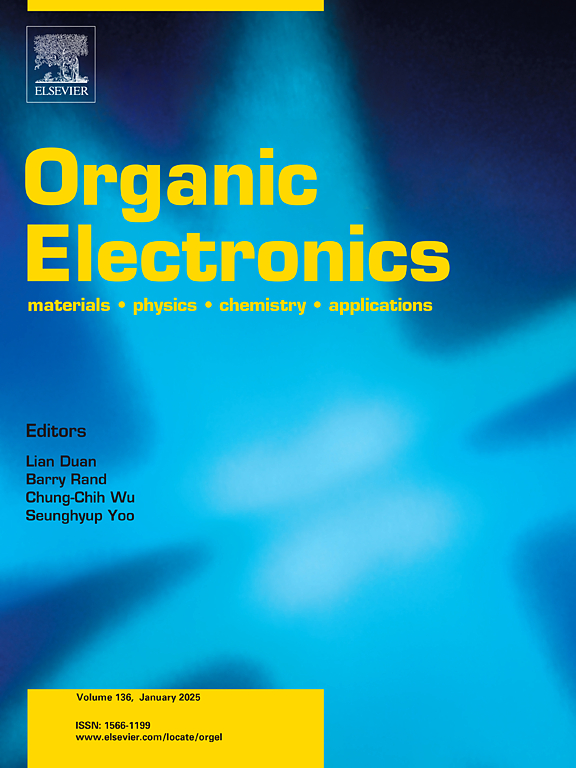Dopamine@Agarose-based器件中memo电容使能的易失性开关
IF 2.6
4区 工程技术
Q3 MATERIALS SCIENCE, MULTIDISCIPLINARY
引用次数: 0
摘要
近年来,开发具有生物相容性、环境友好性和低成本的功能开关材料用于记忆和突触学习装置已变得越来越重要。多巴胺是一种天然存在的生物材料,已被用于各个领域。在本研究中,使用dopamine@agarose作为开关层,夹在Ag顶部和FTO底部电极之间,形成Ag/dopamine@agarose/FTO器件。琼脂糖由于其天然的聚合特性和作为粘合剂的功能而被利用。利用紫外-可见光谱、傅里叶变换红外光谱、原子力显微镜和场发射扫描电镜对开关层进行了表征。非压缩迟滞曲线揭示了器件的mem电容行为,这是通过电化学和频率相关的电容电压研究证实的。电荷通量特性描述了器件的非理想忆阻特性。此外,还研究了累积概率和威布尔分布来理解开关的可变性。该器件在15000个周期内具有稳定的多电平易失性存储效应。结果表明,多巴胺可能是开发可持续易失性记忆装置的潜在候选者。本文章由计算机程序翻译,如有差异,请以英文原文为准。

Mem-capacitance enabled volatile switching in Dopamine@Agarose-based devices
The development of biocompatible, environmentally friendly, and low-cost functional switching materials for memory and synaptic learning devices has gained importance in recent years. Dopamine is a naturally occurring biomaterial that has been used in various fields. In the present study, dopamine@agarose was used as a switching layer, sandwiched between Ag top and FTO bottom electrodes to form the Ag/dopamine@agarose/FTO device. The agarose was utilized due to its natural polymeric properties and its functionality as a binder. The switching layer was characterized using UV–vis spectroscopy, Fourier transform infrared spectroscopy, atomic force microscopy, and field emission scanning electron microscopy. The non-pinched hysteresis curve revealed the mem-capacitive behaviour of the device, which was corroborated using electrochemical and frequency-dependent capacitance-voltage studies. The charge-flux properties depicted the non-ideal memristor nature of the device. Furthermore, the cumulative probability and Weibull distribution were studied to understand the switching variability. The fabricated device demonstrates a stable multilevel volatile memory effect over 15000 cycles. The results assert that dopamine can be a potential candidate for developing sustainable volatile memory devices.
求助全文
通过发布文献求助,成功后即可免费获取论文全文。
去求助
来源期刊

Organic Electronics
工程技术-材料科学:综合
CiteScore
6.60
自引率
6.20%
发文量
238
审稿时长
44 days
期刊介绍:
Organic Electronics is a journal whose primary interdisciplinary focus is on materials and phenomena related to organic devices such as light emitting diodes, thin film transistors, photovoltaic cells, sensors, memories, etc.
Papers suitable for publication in this journal cover such topics as photoconductive and electronic properties of organic materials, thin film structures and characterization in the context of organic devices, charge and exciton transport, organic electronic and optoelectronic devices.
 求助内容:
求助内容: 应助结果提醒方式:
应助结果提醒方式:


